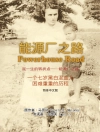Introduction by Andrew Solomon
As a young girl growing up in the ’40s on a vast estate near Munich, Trixi Ost lives a life that is charmed by talent and privilege yet scarred by turbulent times. She enjoys the attentions of a beloved grandfather who sings her songs and holds forth in Latin, the pig and the deer she keeps as pets, and a wide freedom to roam. But everyday routine is swiftly upended as the estate becomes temporary home to an unlikely collection of people displaced by the war: distant relatives, forced laborers, Prussian royals, Polish peasants, generals, and even a few spies. One bright afternoon, a band of Easterners arrive: “The farm community gathered…staring rigidly at the approaching strangers in their desiccated floral colors, the skin of their faces gaunt and gray like dusty paper…. Who were they? Where were they coming from on this June day? Dachau, breathed the young man who led them, almost inaudibly.”
Rendered with insight, humor, and an acute visual lyricism, and sprinkled with fairy tales, rhymes, and family photographs, My Father’s House is a unique exploration of the powers of sense memory and of a little-known chapter in the history of German private life.
Style icon Beatrix Ost arrived in New York in 1975 and was swiftly discovered by the New York Times as one of the city’s most elegant fusions of art and fashion. She has written screenplays, produced movies and theater, and acted in films and on the stage. She lives in New York City and Charlottesville, Virginia.












